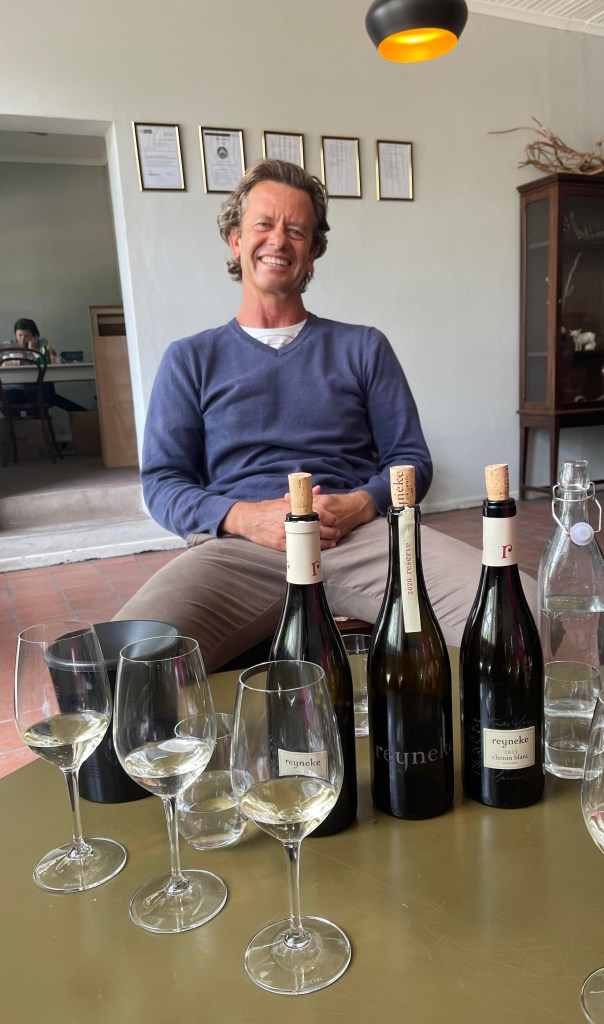
Mostly when I ask winemakers about what they are doing to be more sustainable and to reduce their environmental impact the answer is all about stewardship of the land; vineyard practice, avoidance of pesticides, and perhaps a bit of onsite recycling. All good stuff, but as the drive towards Net Zero Carbon builds obviously the wine industry also needs to step up and make a start down this road.
Challenging though it may be, without plotting a route and taking the first step, the target will never be reached. Equally we consumers need vote with our wallets and make it clear we care, not just about how tasty the wine in our glass is, but also about the journey has taken to get there.
Happily, there are some great wineries out there, leading the way on sustainability and one of them is Reyneke Wines in Stellenbosch.
Since the early noughties Johan Reneke has been working towards achieving the three pillars of sustainability: environmental, social and economic. As he eloquently argues, how can a wine be beautiful if there is ugliness, in the form of glaring social inequity, involved in its making? He also makes the point that only a financially healthy business is going to be able to achieve any sort of environmental and social goals.
Johan sees Biodynamic farming as part of a larger picture of regenerative farming. Agriculture is one of top five contributors to climate change but regenerative agriculture actually provides the opportunity to turn this around. It can actually sequester carbon back into the earth by improving soil health and increasing humus content. Another win is by moving away from monoculture biodiversity can also be improved.
Reyneke works with nature to maintain vine health without recourse to chemical pesticides, herbicides and fertilizers. This ‘land caring’ element of the approach uses for example dandelions and other cover crops to provide a preferential home for pests. It also involves ducks trotting around the vineyards hoovering up snails.
Land within the farm is also ‘spared’ so that there are pockets of wilderness left between the vineyards which are rich in flora and fauna. The farm’s herd of cattle currently roaming in pasture below the winery, are let into the dormant vineyards over winter to fertilize them. In a lovely example of the vineyard’s circular like economy the winery produces feed for the cows in the form of the grape pressings which according to Yohan they love!

Improved soil health and biodynamic farming has made the vines more resilient to pest, fungus and drought and so by extension perhaps some of the other effects of climate change?
As we visit the Reyneke wine farm is currently being extended into a neighbouring farm recently acquired. Some of the vineyards are being kept and some replanted. One can see where strips running along the contours of the hillside are being set side for biodiversity corridors between the vines. Old vines are piled up and will be turned into bio-charcoal that will be mixed in with the soil, locking in the carbon long term.

When looking at the road to net zero carbon any organisation needs to look at its Scope 1, 2 and 3 emissions. Scope 1 emissions are C02 emissions arising from operations directly controlled by the organisation. Scope 2 are emissions up stream caused indirectly by the organisation when it buys in goods and services from elsewhere, for instance electricity or bottles. Finally scope 3 emissions are those downstream arising from the activities of distributors and consumers transporting, consuming and disposing of goods.
At Reyneke the farm is now carbon negative but Johan continues to look at the winery operations. He is investigating renewable energy in the form of photo voltaic (PV) panels, possibly in combination with electric tractors which could double up by providing some energy storage too. The Cape is lovely and sunny but electricity is currently rationed in ‘load shedding’ which adds another reason for moving off grid.
Reyneke is also trailing the use of Tetra Pak type packaging as an option, starting with their entry level organic wines in Scandinavian countries who seem more open to the idea. Clearly there is a challenge here in shifting negative consumer perceptions of ‘bag in a box’ type wine. Moving away from bottles would deliver valuable reductions in carbon footprint in terms of packaging and transport.
A non-interventionist approach follows through into the wine making. Instead of temperature controlled stainless steel and yeast inoculation at Reyneke wild fermentation in oak barrels is the order of the day. The wooden containers and smaller volumes successfully manages the temperature during fermentation in a passive way. The wild yeast and breathability of the oak also give a different character to the wines in particular the Sauvignon Blancs.
Johan’s story is so fascinating, and the challenges he and his team have taken on are so inspiring that this intro’ section could easily run on and on so let’s get to the wines, which do not disappoint!
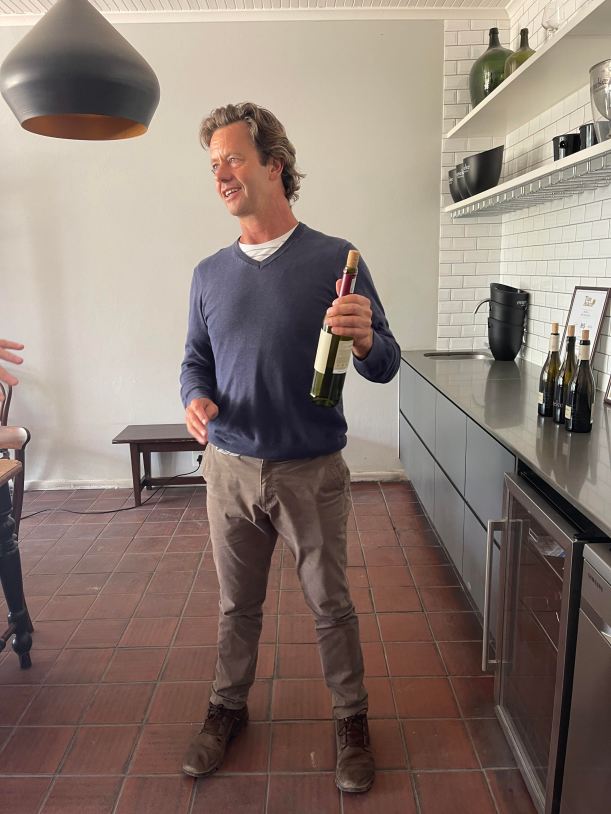
Reyneke Sauvignon Blanc 2021
On the nose, hay, a touch of gooseberry, a whiff of custard. Good body with lovely balance and freshness. A nice supple mouth feel, white peach, exotic fruit pineapple, creamy gooseberry fool. Complex with good length a wine that evolves. Excellent. (Tasted at the farm and again back in London with consistent results)
Reyneke Reserve White 2020.
This is also 100% Sauvignon Blanc. The reserve is made from selected pockets of grapes within the vineyard which have their own character. It gets 24 hours on the skins and the new oak barriques.
More stone fruit on the nose also a bit of hay and a subtle touch of vanilla. Lovely textured mouth feel, more peach and bit of toast, rich but balanced, great length. Neither of these wines are your identikit new world SBs, much more interesting and complex.
Reyneke Chenin Blanc 2021
The vineyards here are part of the South African old vine project so more than 35 years old.
The nose is floral and nutty. In the mouth apricot, honey and a slightly salty finish. Vibrant.
Reyneke Syrah 2019
On the nose, sweet blackberry, dried herbs and crushed pepper. In the mouth dried black fruits, iodine, ripe tannins, full bodied but fresh. Long. (Tasted at the farm and again back in London where the wine benefited with time in the glass.)
Reyneke Reserve Red. 2019
The wine is 100% Syrah and again from selected parcels of the vineyard.
On the nose, blueberry pie, ripe fruit, pie crust, vanilla, coffee grounds, fresh garigue herbs. Iodine? Ripe blue and blackberries, powdery tannins, a herbal liquor note, savoury notes of grilled meat, full body and fresh acidity. Complex and very long. So good now that it will be hard to keep ones hands off this to let it mature! (Tasted at the farm and again back in London where again the wine benefited with time in the glass.)

Cornerstone 2019
A blend of Cabernet Franc and Cabernet Sauvignon in this vintage.
The wine is named after the Cornerstone project. Johan sees the workers as the cornerstone of the business, farm workers generally receive low wages as there is high unemployment and viticulture is the least profitable part of the industry. Scheme aims to empower workers with housing and education using profits from the winery.
Classic cassis, black current leaf, black current jam and a touch of sawdust on the nose. Austere at first, black fruits, green pepper, coffee grounds, slightly drying grainy tannins. Tasted again in London it opens up and fruit fills out the palate with bit of air. Still fairly primal at this young stage but good potential.
There is a vibrancy and depth to these wines which is compelling and it’s a quality that the Wander Curtis team have noticed on multiple occasions in other Biodynamic wines by producers such as Felton Road and Chateau Pontet-Canet. On every level there is definitely something to Biodynamic wine making.

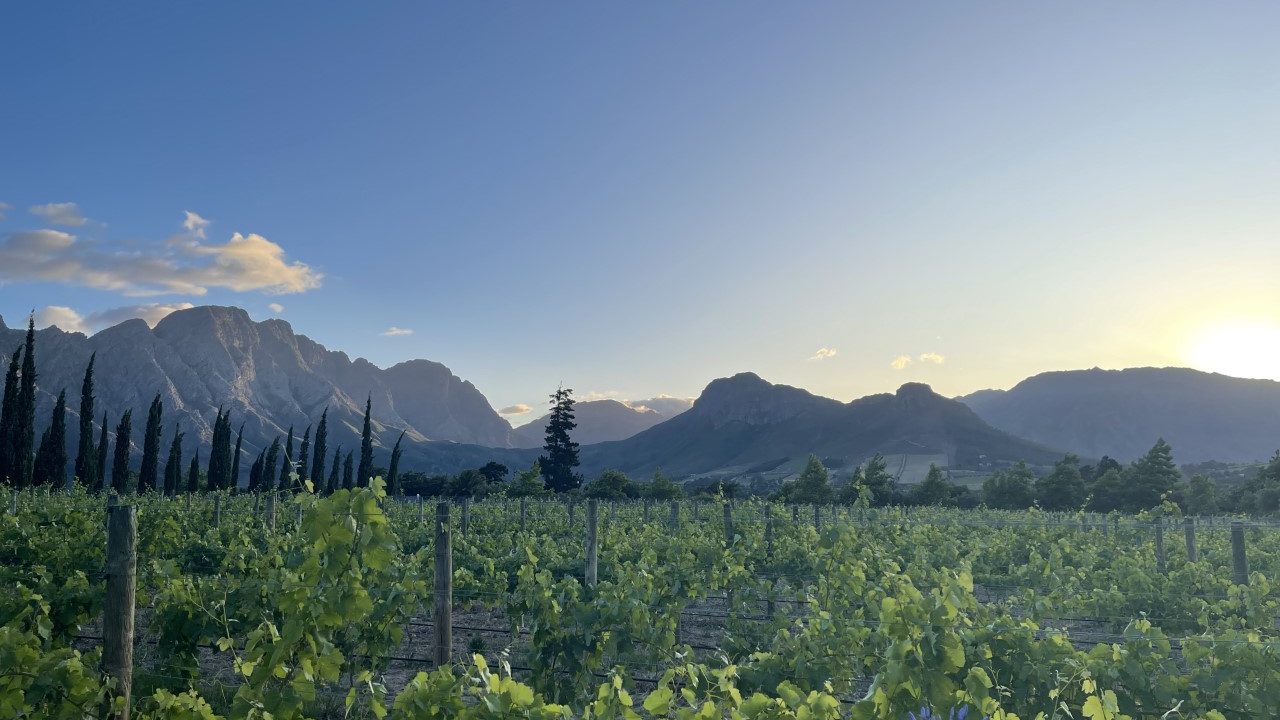


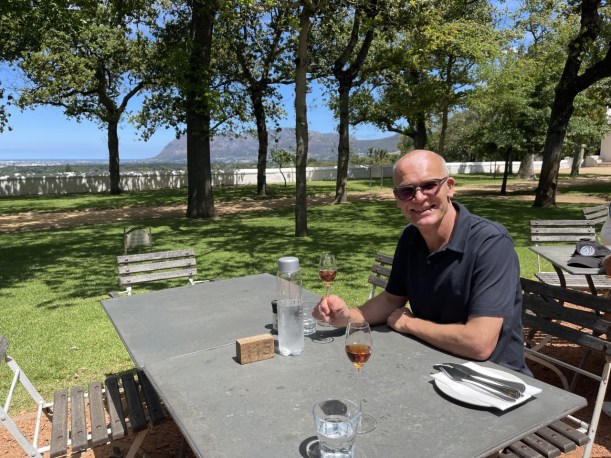



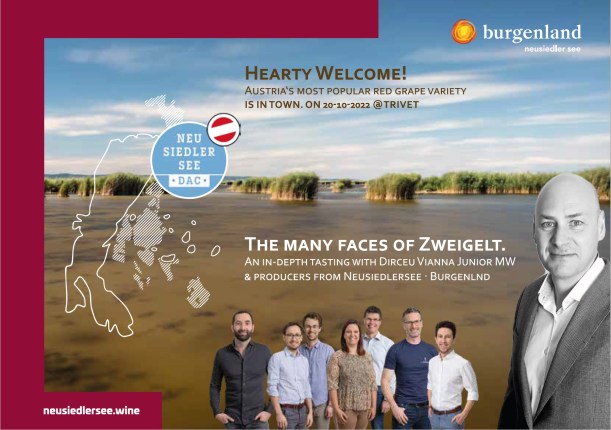




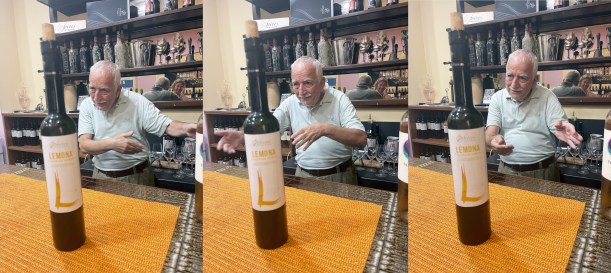





 If you like meat, then look no further than Osteria Magona. Chef Omar Barsacchi serves a selection of beef by Dario Cecchini , Panzano’s famous butcher. On the T bone or a cheek, the meet is amazing.
If you like meat, then look no further than Osteria Magona. Chef Omar Barsacchi serves a selection of beef by Dario Cecchini , Panzano’s famous butcher. On the T bone or a cheek, the meet is amazing.
 The find of the trip though was Enoteca Tognoni in the village of Bolgheri itself. Imagine crossing your favourite wine merchant with a brilliant trattoria and you get Enoteca Tognoni. Walls to the left and right are lined with shelves of Tuscan wines to browse and between customers sit at long tables. Choose your bottle, scan the menu and settle in.
The find of the trip though was Enoteca Tognoni in the village of Bolgheri itself. Imagine crossing your favourite wine merchant with a brilliant trattoria and you get Enoteca Tognoni. Walls to the left and right are lined with shelves of Tuscan wines to browse and between customers sit at long tables. Choose your bottle, scan the menu and settle in. The wines are priced very fairly and you pay the same when you sit down for lunch as you would to take out. Fancy tasting through some of the local icons with your meal then check out the enomatic wine machines on the bar at the back serving both tasting portions and drinking measures.
The wines are priced very fairly and you pay the same when you sit down for lunch as you would to take out. Fancy tasting through some of the local icons with your meal then check out the enomatic wine machines on the bar at the back serving both tasting portions and drinking measures.

 au Rollan de By for many years, it is a reliably delicious Cru Bourgeois from the Medoc, worthy of aging for a few years and sold at a very fair price. So I was intrigued to hear that proprietor Jean Guyon (who also owns Chateau Greysac & a few others) also makes a more ambitious wine at Chateau Haut Condissas with the aim of rivalling the classified growths.
au Rollan de By for many years, it is a reliably delicious Cru Bourgeois from the Medoc, worthy of aging for a few years and sold at a very fair price. So I was intrigued to hear that proprietor Jean Guyon (who also owns Chateau Greysac & a few others) also makes a more ambitious wine at Chateau Haut Condissas with the aim of rivalling the classified growths. Wine maker Olivier Dauga (who used to work at Sociando de Mallet another of my favourite Medoc producers) explained that his goal is to achieve fine tannins by avoiding too much extraction, the fruit should be in the fore with the wood in a supporting role & not the other way around. His philosophy is that good grapes make good wine very good grapes make very good wines. The vineyards of Haut Condissas are to the very north of the Medoc near the Atlantic on the plateau de By close to the river bar.
Wine maker Olivier Dauga (who used to work at Sociando de Mallet another of my favourite Medoc producers) explained that his goal is to achieve fine tannins by avoiding too much extraction, the fruit should be in the fore with the wood in a supporting role & not the other way around. His philosophy is that good grapes make good wine very good grapes make very good wines. The vineyards of Haut Condissas are to the very north of the Medoc near the Atlantic on the plateau de By close to the river bar.
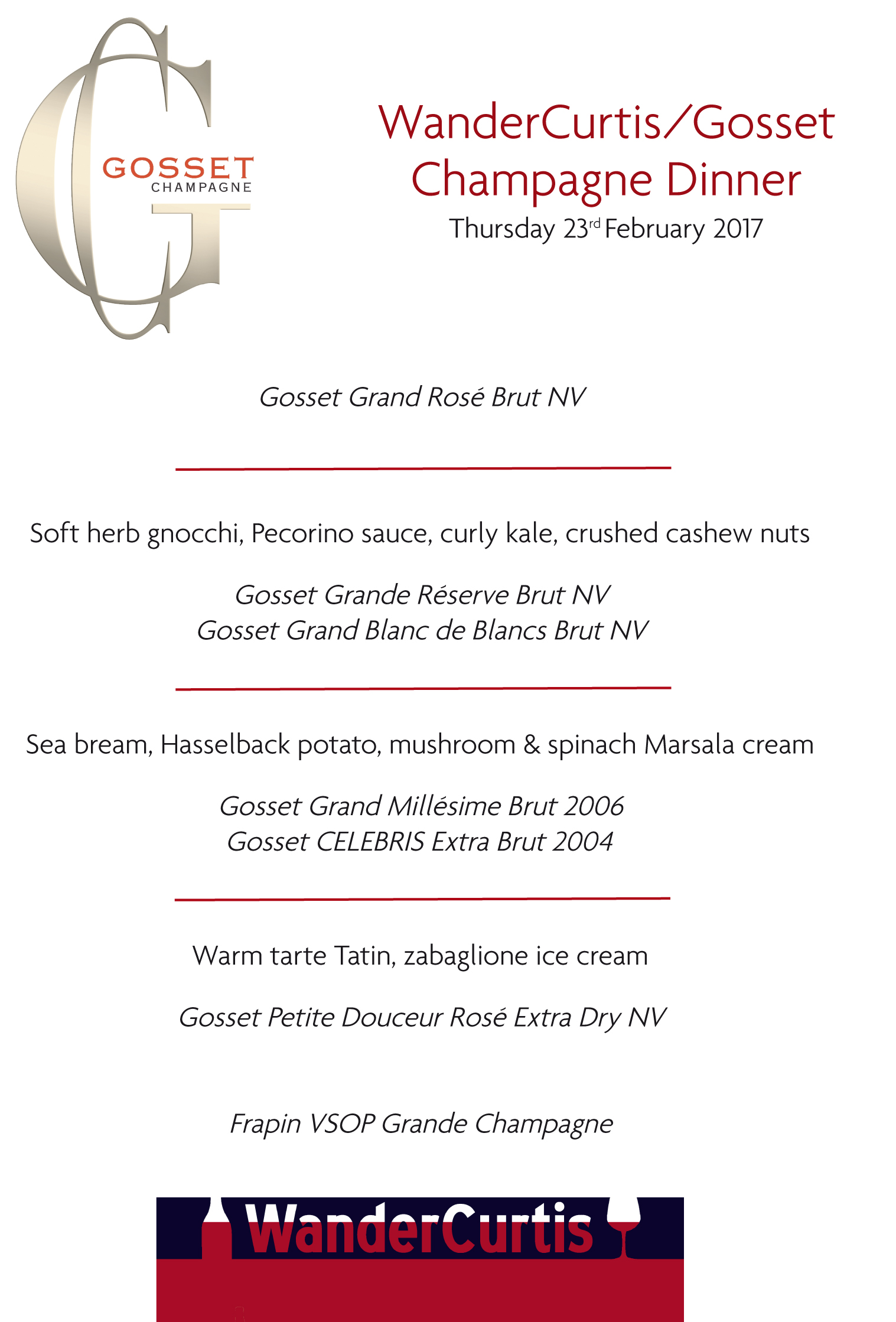


 Michelin-starred Head Chef Tong Chee Hwee and his kitchen at HKK put on a great menu to showcase their super refined Chinese cuisine.
Michelin-starred Head Chef Tong Chee Hwee and his kitchen at HKK put on a great menu to showcase their super refined Chinese cuisine. Blaufränkisch Goldberg 2005, Weingut Prieler
Blaufränkisch Goldberg 2005, Weingut Prieler
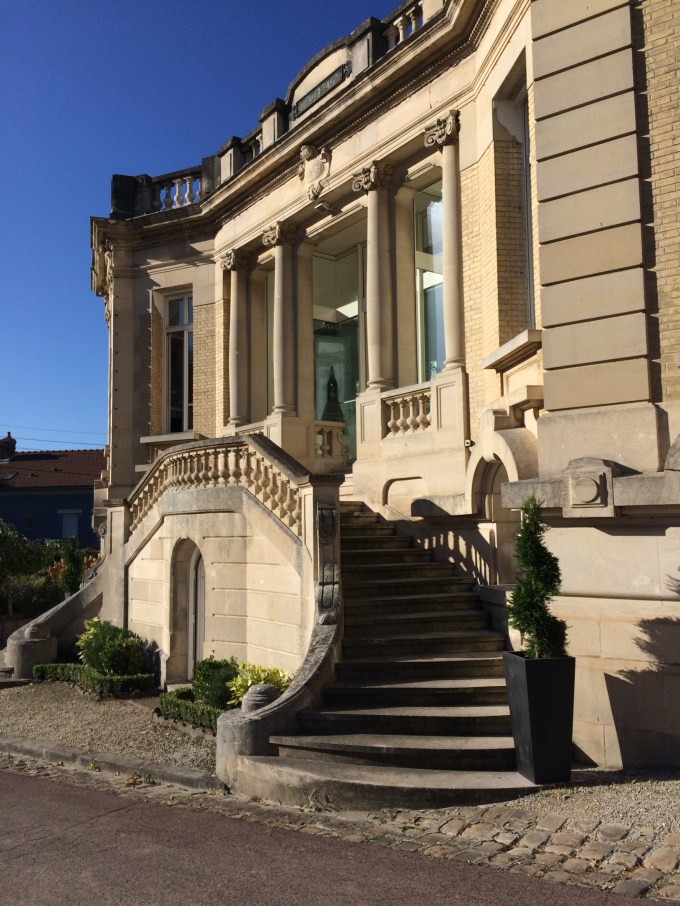 The house was bought by family Bollinger in 2005 and they have since rejuvenated the winery and put in place a young and dynamic team to take it forward as a house with its own distinct character. With an annual production of around 700000 bottles this remains a small hands on winery in the heart of Ay. Caroline Latrive is the chef de cave responsible for maintaining the fresh and elegant character of these chardonnay focused wines.
The house was bought by family Bollinger in 2005 and they have since rejuvenated the winery and put in place a young and dynamic team to take it forward as a house with its own distinct character. With an annual production of around 700000 bottles this remains a small hands on winery in the heart of Ay. Caroline Latrive is the chef de cave responsible for maintaining the fresh and elegant character of these chardonnay focused wines. Brut Nature NV. The same blend as the Majeur but with no dosage and about four years aging on the lees. The nose is similar to majeur but with some spice and lovely autolytic notes of fresh bread. In the mouth great freshness hits one with a wash of sea spray then lime. Wow this has a great finish of minerals, bread, lemon peel and is very very long. Fantastic an excellent food wine.
Brut Nature NV. The same blend as the Majeur but with no dosage and about four years aging on the lees. The nose is similar to majeur but with some spice and lovely autolytic notes of fresh bread. In the mouth great freshness hits one with a wash of sea spray then lime. Wow this has a great finish of minerals, bread, lemon peel and is very very long. Fantastic an excellent food wine.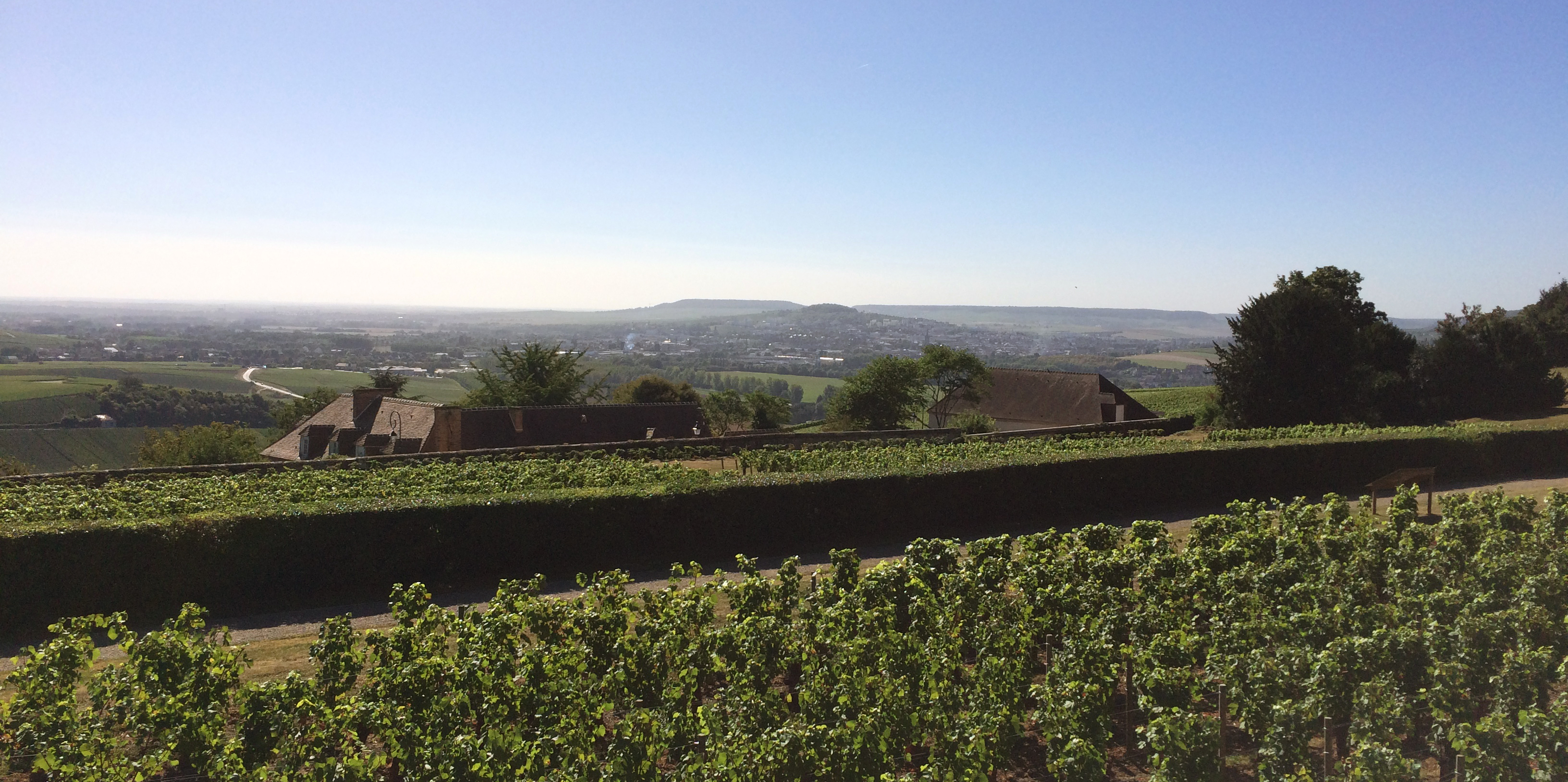

 Dom Perignon Brut millesime P2 1998. Disgorged in 2008/9.
Dom Perignon Brut millesime P2 1998. Disgorged in 2008/9.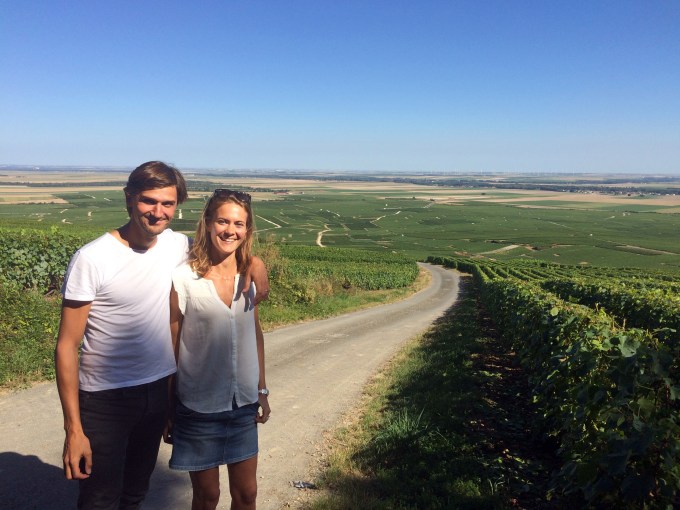 Claire is the 5th generation of wine makers at Champagne Andre Robert taking over from her grandfather Andre who started making his own wines in the 1960s alongside supplying grapes to one of the big name houses. There was something slightly reverential in the way that Claire and Jean-Baptiste showed us around the family vineyards situated just outside Le Mesnil sur Oger and clearly they realise just what a special in the Cote de Blancs place it is. At the sometime they are obviously excited at possibilities that their new winery, just outside the village, open up for the future. Claire and Jean-Baptiste have plenty of new ideas too such as commissioning new oak barrels made from the local woods to make Les Mesnil in Le Mesnil barrels. They also plan to start producing a late disgorgement vintage champagne to add to the range.
Claire is the 5th generation of wine makers at Champagne Andre Robert taking over from her grandfather Andre who started making his own wines in the 1960s alongside supplying grapes to one of the big name houses. There was something slightly reverential in the way that Claire and Jean-Baptiste showed us around the family vineyards situated just outside Le Mesnil sur Oger and clearly they realise just what a special in the Cote de Blancs place it is. At the sometime they are obviously excited at possibilities that their new winery, just outside the village, open up for the future. Claire and Jean-Baptiste have plenty of new ideas too such as commissioning new oak barrels made from the local woods to make Les Mesnil in Le Mesnil barrels. They also plan to start producing a late disgorgement vintage champagne to add to the range.